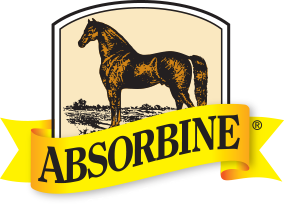 Hoof Nutrition Intelligence is a twice-a-month web segment that is designed to add to the education of footcare professionals when it comes to effectively feeding the hoof. The goal of this web-exclusive feature is to zero in on specific areas of hoof nutrition and avoid broad-based articles that simply look at the overall equine feeding situation.
Hoof Nutrition Intelligence is a twice-a-month web segment that is designed to add to the education of footcare professionals when it comes to effectively feeding the hoof. The goal of this web-exclusive feature is to zero in on specific areas of hoof nutrition and avoid broad-based articles that simply look at the overall equine feeding situation.
Below you will find Part 1 of the latest question and answer installment that you can share with your footcare clients.
Q: Do horses need to be fed differently during cold winter weather?
By Marcia Hathaway
A horse's nutritional requirements change when the temperature dips during the winter. The ideal situation is to have a horse entering the winter acclimated to the cold with a thick hair coat and fat cover. It has been estimated that a horse with a healthy winter coat that is kept dry will be comfortable at temperatures down to 18° F. If the horse has access to a shelter it can tolerate temperatures as low as minus 40° F.
As the temperature decreases with the onset of winter, the horse requires additional dietary energy to maintain its body temperature and condition. For every degree below 18° F, the horse requires an additional 1% energy in their diet. For example, if a 1,000 lb horse needs 16 pounds of good-quality hay each day when the temperature is 18° F, then its requirement could be expected to increase by approximately 2 to 2.5 pounds to 18 to 18.5 pounds if the temperature dropped to 0° F. The increased dietary energy requirement would be even greater if the horse didn't have access to shelter.
So what is the best source of additional dietary energy during the cold winter months? A horse manages to utilize dietary energy in the winter to keep warm in a couple of ways. First, there is the heat given off as a byproduct of normal metabolic processes. Secondly, there is the heat generated from microbial fermentation of forages that occurs in the hindgut during digestion.
Many people believe that feeding more concentrates or grains (because they are energy dense), will help keep the horse warmer. However, there isn't as much heat produced as a byproduct of digestion, absorption and utilization of concentrates and grains as there is from the microbial fermentation of forages. As a result, increasing the amount of forage in the diet will help meet the increasing energy needs and will result in an increase in microbial fermentation, which will help keep the horse warm.
An additional important point to consider is the need to provide access to clean, “warm” (45° to 64° F) water. A horse will require more water when eating dried feedstuffs like hay, compared to horses grazing on a lush, high moisture pasture. If the water is ice cold, a horse will not drink as much. The goal should always be to maximize water consumption to help prevent the possibility of dehydration and colic.
Marcia Hathaway is an animal scientist at the University of Minnesota.
Hoof Nutrition Intelligence is brought to you by W.F. Young Co. (Absorbine). 
Like many significant achievements, Absorbine® grew out of humble beginnings—and through the tenacity of someone willing to question the status quo. In this case, it was a young woman in late 19th-century Massachusetts: Mary Ida Young. Her husband, Wilbur Fenelon Young, was an enterprising piano deliveryman who relied on the couple’s team of horses to make deliveries throughout the Northeast. Inspired by Mary Ida and Wilbur’s vision, Absorbine® has continued to add innovative products throughout the years — products used every day by horse owners around the world. Which is why, since 1892, we’ve been The Horse World’s Most Trusted Name®.
Click here to read Part 2 of the January 1, 2017 installment: How important is feeding a balanced diet when it comes to good hoof health?
Click here to read more installments of Hoof Nutrition Intelligence.

Post a comment
Report Abusive Comment